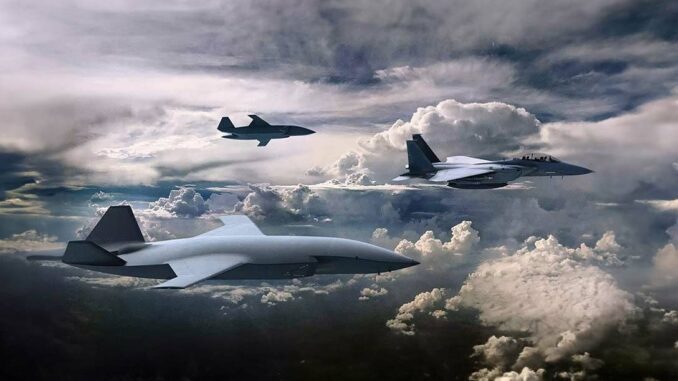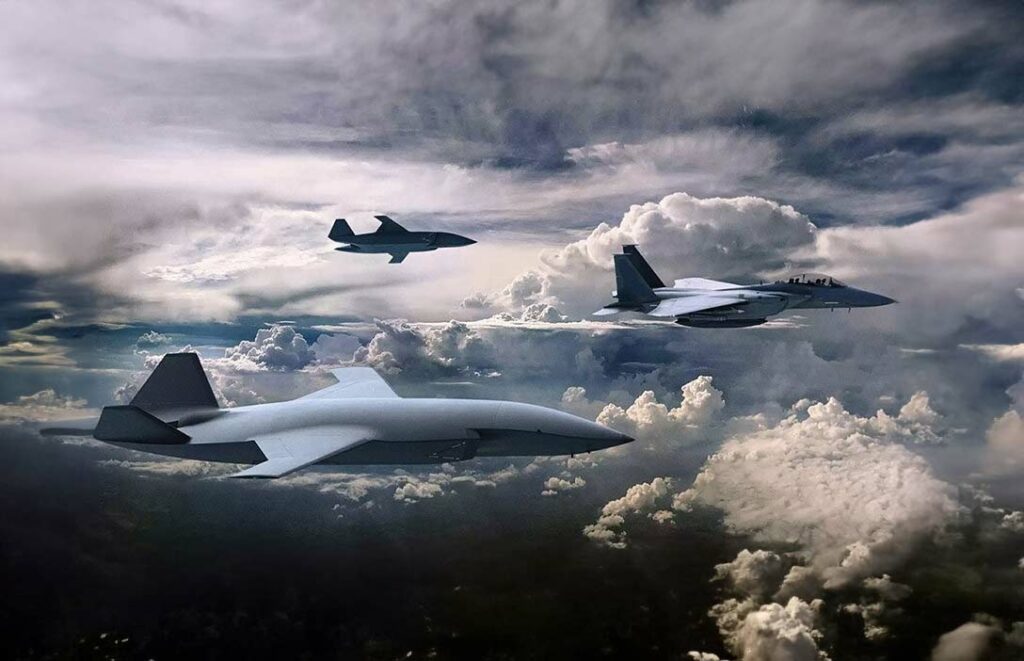
Discover the impact of combat drones on the aviation industry and military doctrines, with a focus on costs and operational efficiency.
The advent of combat drones
Combat drones represent a major advance in military aviation, heralding the era of 6th-generation combat aircraft such as the American NGAD and the European NGF and Tempest. These unmanned aircraft are designed to perform the functions of traditional fighter jets, but with significantly different technological and strategic capabilities. The aim is to carry out complex missions without risk to crews, a perspective that is transforming doctrinal and industrial approaches to defense.
Costs and divergent drone design
The costs and design of combat UAVs vary widely from one project to another. For example, the Russian S-70 Okhotnik-B drone is almost as expensive as a traditional fighter jet, with a price tag approaching that of the F/A-18 and F-35, reflecting comparable performance. Conversely, projects such as Boeing’s MQ-28 Ghost Bat, developed in cooperation with Australia, show a trend towards more economical UAVs, aiming for much lower unit costs, which could radically change the economics of aerial warfare.

Strategic impact and operational capabilities
Combat drones are set to play a strategic role, increasing operational capabilities without the costs associated with manned aircraft. For example, the US Navy is considering $15 million drones with very low implementation costs, as they are not intended for regular maintenance or extended service lives. These drones can be used in missions where they can attract enemy fire or act as an attack force, revolutionizing the use of resources and the approach to military engagements.
Industrial implications and paradigm shift
This shift towards combat drones is also changing the industrial paradigm. The production of low-cost, semi-consumable drones can significantly reduce ownership and operating costs compared with traditional fighter aircraft. This is prompting armed forces, such as the US Navy, to envisage a future in which a large part of their fleet is made up of UAVs, changing the composition and management of air forces.
Implications for France and other nations
France and other countries are closely observing this transition to combat drones. Adopting this technology could offer significant advantages in terms of cost and operational efficiency, but requires adjustments in terms of training, doctrine and infrastructure. It is crucial that these nations properly assess the long-term implications of integrating drones into their armed forces to remain internationally competitive and maintain a defense capability adapted to future threats.
Combat drones are redefining the foundations of military aviation, offering new perspectives in terms of cost, efficiency and strategy. As the world moves towards more advanced technologies and adapted combat doctrines, drones are positioning themselves as a central pivot in this transformation, promising a significant evolution in global military capabilities.
War Wings Daily is an independant magazine.